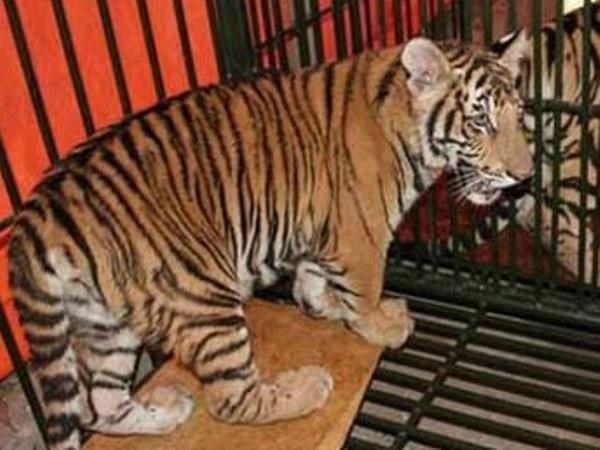Wildlife crime challenges Vietnam’s tiger conservation efforts
Numerous challenges are facing Vietnam in its efforts to realise the commitment to doubling the number of wild tigers by 2022.
 A tiger found in a trafficking case (Photo: ENV)
A tiger found in a trafficking case (Photo: ENV)Hanoi (VNA) – Numerous challenges are facing Vietnam in its efforts to realise the commitment to doubling the number of wild tigers by 2022.
The country made the commitment at the Global Tiger Summit in Saint Petersburg city, Russia, in 2010.
In April 2014, a national programme for tiger conservation until 2022 was approved with the aim of protecting tigers, their habitat and their prey so as to help curb the decline of the number of the wild cats and gradually improve their population.
The World Wildlife Fund (WWF) said on July 29 that while wild tigers in Vietnam were less than five in 2016, the number of captive and trafficked has amounted to hundreds.
In 2017 and 2018, the Education for Nature-Vietnam (ENV) surveyed 17 private facilities and found that there were 296 tigers kept in the country, including 244 at private establishments and 52 at State-owned zoos and conservation centres. The number of captive tigers surged from 54 in 2009 to 201 to 2017.
Meanwhile, skins and bones of at least 228 tigers have been seized from the 600 wildlife trafficking cases uncovered in Vietnam over the last 15 years.
Trafficking rings are pushing the tigers to the brink of extinction, the ENV said, adding that in 2017 and 2019, it recorded 2,650 violations, including 527 relevant to advertising, mainly on social networks; 19 involving the storage of tiger parts or products; and 24 tiger smuggling and trafficking cases.
Tiger-related violations were also continually discovered in the first half of 2019.
ENV Deputy Director Nguyen Phuong Dung said she hopes authorities will strictly deal with those infringements so as to fight back wildlife crime, which is getting complicated in Vietnam.
The International Tiger Day (July 29) is an occasion to improve the tiger awareness among people around the globe. Conservation organisations have called for joint efforts to protect tigers and say “no” to tiger products so that the feline will not face the same destiny as the Javan rhinoceros, which became extinct in Vietnam in 2010. -VNA













